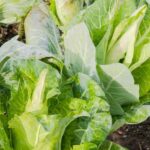Vegetable gardening is a rewarding endeavor, allowing you to cultivate fresh, nutritious produce right in your own backyard. However, one common challenge that gardeners face is weed control. Weeds compete for nutrients and resources with your vegetable plants, hampering their growth and reducing their yield potential. That’s where Preen comes in – a powerful solution for preventing weeds in vegetable gardens.
In this article, we will explore the purpose and benefits of using Preen in vegetable gardens. We will begin by emphasizing the importance of weed control and how it impacts the success of your vegetable garden. From there, we’ll dive into what exactly Preen is and how it works to prevent weed growth.
Understanding Preen is key to achieving optimal results. We will provide an overview of its active ingredients and explain its mode of action in preventing weeds from taking hold. Additionally, we’ll highlight the safety and eco-friendly aspects of Preen, allowing you to confidently incorporate it into your gardening routine.
But before you can apply Preen effectively, preparing your vegetable garden is essential. We will discuss the importance of proper soil preparation and provide step-by-step instructions on getting your garden beds ready for application. We’ll also offer tips on removing any existing weeds or vegetation before applying Preen.
Using Preen in your vegetable garden offers numerous benefits beyond just weed prevention. It reduces competition for nutrients and resources among plants, leading to improved growth and higher yield potential for your vegetables. Throughout this article, we’ll delve deeper into these advantages while also addressing any potential drawbacks or precautions associated with using Preen.
Whether you’re new to vegetable gardening or have been tending to your plot for years, understanding how to effectively use products like Preen can make a significant difference in achieving a healthy, vibrant garden. So let’s explore everything you need to know about using Preen in vegetable gardens – from application techniques to FAQs – as we aim towards a weed-free and bountiful harvest.
Understanding Preen
Preen is a popular weed control product that is commonly used in vegetable gardens. It contains an active ingredient known as trifluralin, which is effective in preventing the growth of weeds. Trifluralin works by inhibiting the growth and development of weed seeds, preventing them from germinating and establishing in the garden beds.
When Preen is applied to a vegetable garden, it forms a thin barrier on the soil surface. This barrier prevents weed seeds from making direct contact with the soil, where they would typically germinate and grow. By creating this barrier, Preen effectively reduces the number of weeds that emerge in the garden beds.
One of the key advantages of using Preen in vegetable gardens is its safety and eco-friendly nature. Preen breaks down quickly when exposed to sunlight, meaning that it does not persist in the soil for extended periods of time or leach into groundwater. Additionally, Preen only affects weed seeds and does not harm established plants or vegetable crops.
To summarize, understanding what Preen is and how it works will help vegetable gardeners make informed decisions about weed control. By using Preen to create a barrier against weed seeds, vegetable gardeners can enjoy fewer weeds in their garden beds without compromising the safety or health of their vegetables.
| Benefits | Information |
|---|---|
| Prevents Weed Growth | Preen creates a barrier that prevents weed seeds from germinating and establishing. |
| Safety & Eco-Friendly | Preen breaks down quickly and does not harm established plants or leach into groundwater. |
Preparation
In order to maximize the effectiveness of Preen in your vegetable garden, it is important to properly prepare the area before applying the product. Taking the time to prepare your soil and remove any existing weeds or vegetation will ensure that Preen can work to its full potential.
Step 1: Soil Preparation
Before applying Preen, it is crucial to have well-prepared soil in your vegetable garden. Start by removing any large debris or rocks from the area. Then, use a garden fork or tiller to loosen the soil and improve its drainage. This will create an environment where your vegetables can thrive while minimizing weed growth.
Next, assess the nutrient levels in your soil by conducting a soil test. This will help you determine if any amendments are needed to provide optimal growing conditions for your vegetables. Based on the test results, you may need to add organic matter, such as compost or manure, or adjust pH levels with lime or sulfur.
Step 2: Weed Removal
Before applying Preen, it is important to eliminate any existing weeds or vegetation in your vegetable garden beds. Weeds can compete with your vegetables for nutrients, water, and sunlight, reducing their growth potential.
Start by manually pulling out visible weeds by hand or using a hoe for larger weeds. Be sure to remove both the roots and aerial parts of the weed plants to prevent regrowth. For stubborn weeds with deep roots, consider using a weed digger tool for easier removal.
If your vegetable garden beds are heavily infested with weeds or have perennial weeds that tend to resprout, you may want to consider using a pre-emergent herbicide before applying Preen. Follow the instructions provided on the herbicide label carefully and allow sufficient time for it to take effect before proceeding with Preen application.
By following these preparation steps diligently before applying Preen in your vegetable garden, you will set the stage for a healthier and more productive growing season. Preparing the soil and eliminating existing weeds will provide an optimal environment for your vegetables to thrive while allowing Preen to effectively prevent future weed growth.
Application Techniques
Preen is a highly effective weed prevention solution that can be used in vegetable gardens to help ensure weed-free beds and healthy plant growth. Proper application techniques are crucial to maximize the benefits of using Preen in vegetable gardens. This section will provide detailed instructions on how to apply Preen in vegetable gardens, including recommended application rates and timings, as well as precautions and protective measures to take during the application process.
When it comes to applying Preen in vegetable gardens, it is important to follow the recommended application rates and timings specified on the product label. The appropriate application rate may vary depending on the size of your garden beds and the severity of weed infestation. As a general guideline, for most vegetable gardens, apply approximately 1 pound of Preen per 200 square feet of garden area.
Before applying Preen, it is essential to prepare your vegetable garden beds properly. Make sure that the soil has been thoroughly cultivated and any existing weeds or vegetation have been removed. Clearing away weeds ensures that Preen will have maximum contact with the soil surface, where it can effectively create a barrier against weed seeds.
To evenly distribute Preen in your garden beds, sprinkle it directly over the soil surface at the recommended rate. It is important to note that Preen should not be applied directly onto or around desirable plants or seedlings as it may inhibit their growth. After applying, lightly rake or cultivate the soil surface to mix Preen into the top layer of soil where weed seeds typically germinate.
During application, it is advisable to wear gloves and take precautions to prevent direct contact with skin or eyes. Protecting yourself from exposure helps ensure a safe gardening experience. Additionally, avoid applying Preen on windy days to prevent drift onto desirable plants or sensitive areas.
Using proper application techniques when applying Preen in your vegetable garden allows for effective weed prevention while promoting healthy plant growth. Following these guidelines will help you achieve a beautiful and productive vegetable garden free from unwanted weeds.
| Recommended Application Rate | 1 pound of Preen per 200 square feet of garden area |
|---|---|
| Preparation | – Thoroughly cultivate the soil and remove existing weeds or vegetation before applying Preen.
|
| Application Technique | – Sprinkle Preen directly over the soil surface at the recommended rate.
|
| Protective Measures | – Wear gloves during application to prevent direct skin contact.
|
Benefits of Using Preen in Vegetable Gardens
Using Preen in vegetable gardens offers several benefits that can help gardeners maintain a healthy and thriving space. The following are some of the key advantages of using Preen:
- Long-term weed prevention: One of the primary benefits of using Preen in vegetable gardens is its ability to prevent weed growth for an extended period. Preen works by creating a barrier on the surface of the soil, inhibiting the germination of weed seeds. This reduces the need for regular manual weeding and saves both time and effort for gardeners.
- Reduced competition for nutrients and resources: Weeds compete with vegetables for essential nutrients, water, and sunlight. By preventing weed growth, Preen ensures that vegetables have better access to these resources, allowing them to grow stronger and healthier. As a result, gardeners may observe improved growth rates and higher yield potential in their vegetable plants.
- Improved aesthetics and ease of maintenance: Vegetable gardens that are free from weeds not only look more attractive but are also easier to maintain. Without weeds, it becomes easier to visually identify vegetables and tend to their specific needs such as pruning, fertilizing, or harvesting. Furthermore, with fewer weeds present, gardeners can focus on other important aspects of gardening such as pest control or disease prevention.
To maximize the benefits of using Preen in vegetable gardens, it is essential to follow proper application techniques and precautions. Applying an appropriate amount of Preen at the recommended timing will ensure optimal effectiveness without harming desired plants or pollinators. Additionally, it is crucial to avoid direct contact between edible parts of the plants and any areas treated with Preen.
By considering these benefits and guidelines for using Preen in vegetable gardens, gardeners can enjoy a healthier environment with minimal weed interference while growing an abundant harvest of delicious vegetables throughout the season.
Things to Consider
Potential Environmental Impact
While Preen is generally considered safe for use in vegetable gardens, it is important to note that it may have some potential environmental impact. Preen contains an active ingredient called trifluralin, which can persist in the soil and potentially affect non-target plants or organisms. Therefore, it is crucial to carefully follow the label instructions and guidelines provided by the manufacturer to minimize any unintended consequences.
To minimize the potential environmental impact of using Preen in vegetable gardens, consider a few precautions:
- Avoid applying Preen near water sources or areas where water runoff may occur, such as streams or ponds. This will prevent the active ingredients from entering aquatic ecosystems and potentially harming aquatic organisms.
- Do not apply Preen in areas where desirable plants, such as flowers or ornamentals, are growing nearby. Trifluralin can drift through air currents or leach into the soil, affecting these plants unintentionally.
- Follow recommended dosage rates and application timings specified by the manufacturer. Using excessive amounts of Preen can increase the risk of environmental contamination and harm beneficial insects or organisms present in your garden.
Precautions for Edible Plants
When using Preen in vegetable gardens, it is important to take precautions to avoid direct contact between the product and edible parts of your plants. While Preen has been deemed safe when used correctly, minimizing exposure is always recommended.
Consider these precautions when applying Preen:
- Apply Preen before sowing seeds or transplanting seedlings to ensure there is no direct contact with young edible plants.
- When applying Preen around established vegetable plants, be careful not to let the product touch their leaves or stems directly.
- If you anticipate having a crop rotation plan that includes vegetables susceptible to trifluralin residues (such as root crops), consider avoiding using Preen altogether or opt for alternative weed control methods.
Alternative Strategies for Organic Gardening
If you prefer organic gardening or want to avoid using chemicals in your vegetable garden, there are alternative strategies available for weed control. While Preen offers an effective solution for preventing weeds, some gardeners may opt for organic or chemical-free options.
Consider these alternative strategies:
- Mulch: Applying a layer of organic mulch like straw, wood chips, or leaves can smother weed growth and prevent sunlight from reaching the soil surface.
- Hand-weeding: Regularly inspect your vegetable garden and manually remove any weeds that emerge. Be thorough to prevent them from flowering and setting seed.
- Cultural practices: Implementing good cultural practices like proper spacing between plants, regular watering, and maintaining healthy soil fertility can help create a competitive advantage over weeds.
Remember, while these alternative strategies may require more manual effort and maintenance compared to using Preen, they provide a chemical-free approach to weed control in your vegetable garden.
Frequently Asked Questions (FAQs) about Preen in Vegetable Gardens
Is Preen safe to use in vegetable gardens?
Yes, Preen is safe to use in vegetable gardens when applied according to the recommended guidelines. The active ingredient in Preen, trifluralin, is registered for use in vegetable gardens by the Environmental Protection Agency (EPA). However, it is important to follow the label instructions and avoid direct contact with edible parts of the plants. It is also advisable to wash vegetables thoroughly before consumption.
How effective is Preen in preventing weed growth?
Preen is highly effective in preventing weed growth in vegetable gardens. When properly applied, it forms a barrier on the soil surface that inhibits weed seed germination. This prevents weeds from competing with vegetable plants for nutrients, water, and sunlight. Regular application of Preen can significantly reduce the need for manual weeding and help maintain a clean and tidy garden.
Can I use Preen in organic or chemical-free gardening practices?
While Preen is not certified for organic gardening practices, it can still be used effectively in combination with certain organic principles. Organic gardeners may choose to integrate hand-weeding or other mechanical methods as their primary weed control strategy and use Preen as a supplemental tool for extra weed prevention. If you prefer chemical-free gardening entirely, there are alternative strategies available such as using mulch or landscape fabric to create a physical barrier against weeds.
How long does Preen last in preventing weed growth?
The longevity of Preen’s weed-preventing effect can vary depending on factors such as weather conditions and soil type. In general, the barrier formed by Preen lasts approximately three to four months after application. However, it is recommended to reapply Preen every twelve weeks or whenever you see signs of new weed growth emerging.
These are just a few frequently asked questions about using Preen in vegetable gardens. By addressing common concerns and providing accurate information, gardeners can make informed decisions about incorporating Preen into their weed control strategy. Remember to always read and follow the label instructions for optimal results.
Conclusion
In conclusion, using Preen in vegetable gardens offers numerous benefits and provides an effective solution for weed prevention. By controlling weeds in your vegetable garden, you can ensure that your plants receive the maximum amount of nutrients and resources they need to thrive.
Preen works by forming a barrier on the soil surface, inhibiting weed seed germination so that they do not compete with your vegetables. Not only is Preen safe to use in vegetable gardens, but it is also eco-friendly.
Before applying Preen, it is crucial to properly prepare your vegetable garden beds. This includes removing any existing weeds or vegetation and ensuring the soil is well-prepared for optimal plant growth. Once your garden beds are ready, follow the recommended application rates and timings for Preen usage. Distribute it evenly throughout the garden beds, taking appropriate precautions to avoid direct contact with edible parts of the plants.
With continued use of Preen, you will experience long-term benefits in terms of weed prevention. By reducing competition for resources, your vegetables will have a better chance of flourishing and producing higher yields. However, it’s important to consider potential drawbacks or precautions associated with using Preen in vegetable gardens. If you prefer organic or chemical-free gardening practices, there are alternative strategies available for you to explore.
In summary, using Preen in your vegetable garden can lead to a healthier and weed-free environment for your plants. Remember to follow the necessary guidelines and precautions during application to ensure success. Give Preen a try and enjoy the rewards of a thriving vegetable garden.
Frequently Asked Questions
Is Preen safe to use in vegetable gardens?
Preen is generally safe to use in vegetable gardens when applied correctly and according to the instructions provided by the manufacturer. It is designed to prevent weed growth by creating a barrier on the soil surface that inhibits the germination of weed seeds. However, it is important to avoid direct contact with edible parts of plants.
To ensure safety, it is recommended to apply Preen before planting vegetables, being careful not to splash it onto any desired plants. Once applied, lightly rake or water it into the soil surface for optimal effectiveness while minimizing contact with vegetable plants.
When should you not use Preen?
There are certain situations when it is not recommended to use Preen as a weed control method. It should not be used on established vegetable plants or within the root zone of desirable plants, as Preen could potentially inhibit their growth.
Additionally, Preen should not be used in gardens where seeds have already been planted or where new plants will be started from seed, as it can also prevent their germination. Furthermore, if you have recently transplanted young vegetable seedlings, it is advisable to wait until they are well-established before applying Preen.
Will too much Preen hurt plants?
Using too much Preen can indeed harm plants if not applied properly or in excessive quantities. The active ingredient in Preen works by inhibiting the germination of weed seeds but could also affect other types of seeds if exposed in large amounts. When using this product, following the recommended application rates is essential to prevent damage to your plants.
Over-application may lead to stunted growth or even death of desired vegetation and may hinder seed germination that you want for your vegetables or other plants to thrive. Careful and precise application according to instructions ensures that you achieve optimal results while reducing potential harm to your garden’s vegetation.

If you’re looking to get into vegetable gardening, or are just looking for some tips on how to make your current garden better, then you’ve come to the right place! My name is Ethel and I have been gardening for years. In this blog, I’m going to share with you some of my best tips on how to create a successful vegetable garden.





